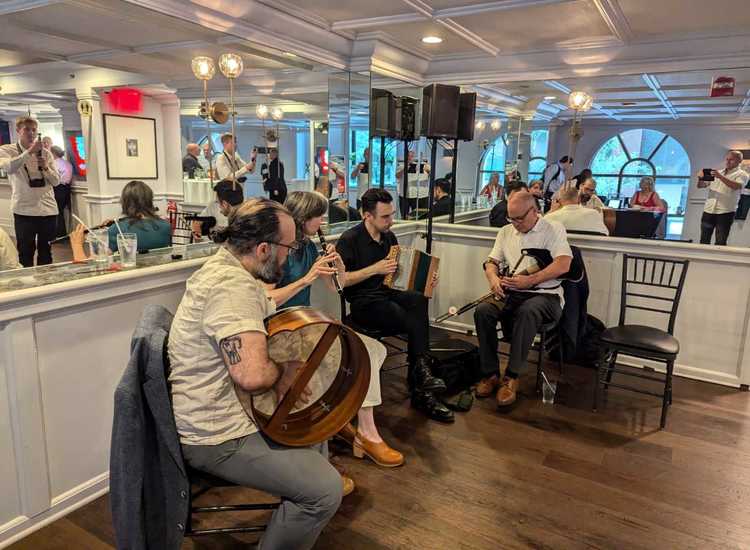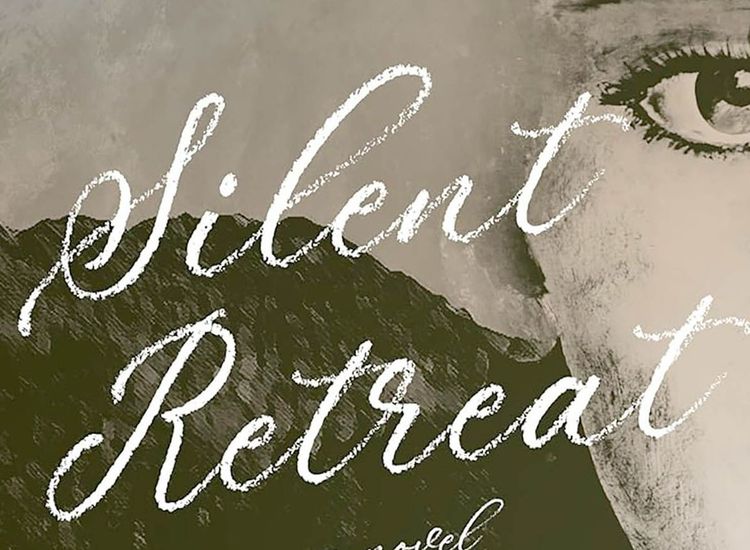By Karen Butler
[caption id="attachment_63667" align="aligncenter" width="300" caption="Nick Thurston and Leslie Murphy in a scene from "White Irish Drinkers.""]
To say making the film "White Irish Drinkers" was a labor of love would be a gross understatement.
Not only did writer-director John Gray put up $600,000 of his own money to bring the movie to the big screen, but its star and cameraman also gamely stayed in the abandoned New York brownstone where the film was shot because there was no budget for their lodging.
THAT's how much those involved in the project believed in it.
Did it pay off? Moviegoers will soon be able to judge. The celebrated film, which was an official selection of the 2010 Toronto Film Festival and the Audience Award Winner of the 2010 Woodstock Film Festival, is set to open the Craic Festival in New York on Thursday.
"It's a true festival film. It was shot in Brooklyn where I grew up, so I have a personal connection to the film and the filmmaker is from Brooklyn and I thought they did a really good job with the direction and the performances, so all those things together, I think it's just a great opening film for us with the subject matter," Craic Festival director Terence Mulligan told the Irish Echo by phone. "You can't ask for a better opening than to have a local filmmaker; it very rarely happens with us."
Set in the 1970s, "Drinkers" is about Brian Leary, an Irish-American aspiring artist with a blue-collar upbringing who uses painting and drawing as an escape from the tension created by his abusive, alcoholic father and trouble-making brother, played by Stephen Lang and Geoff Wigdor respectively. Newcomer Nick Thurston plays Brian and Karen Allen plays his mother.
"It's a script that I'd written originally about 10 years ago... and I went through all the usual things one goes through trying to get a movie made and I could never get it financed," Gray told the Echo in a separate phone interview. "Every year, I'd pull it out of the drawer and go: 'I'd really like to make this movie. Someday, I'm going to do it.' And then, in the course of those 10 years, two things happened -- I was lucky enough to get a TV show ['Ghost Whisperer'] on the air that lasted for awhile and, also, of course, the technology changed, so it became possible to do a movie digitally in a very short amount of time. And so, I finally got to a place where I thought, 'Maybe I could just finance this thing myself and just get it off my chest.'"
Gray said the movie, which was shot in 17 days, wouldn't have been possible without the talent and can-do attitude of his "tremendous cast" and tireless behind-the-camera creative team, which included his producer wife, Melissa Jo Peltier.
"We were just so grateful that the cast signed on. There were really no frills, no trailers. Every day was like, 'Where do we [urinate] today?' And you find a bagel shop where they'll let you use the bathroom if you buy something," the filmmaker recalled. "And here's Stephen Lang coming off of 'Avatar.' Their bagel budget was probably bigger than our whole budget. ... I think everyone was really invested in the movie. ... Here, we had a chance to actually tell a story about people and relationships, something that may be a little meaty, perhaps, and people got into that on the crew and were happy to be involved and they just worked so hard and really showed up with great stuff and the same thing with the cast."
Gray said the reason he couldn't let the idea for "Drinkers" go was because the story of a young man quietly rebelling against the expectations of those around him was one to which he could relate -- even if the film's plot wasn't autobiographical.
"It's a very personal story in the sense that I grew up in that neighborhood in that era," he noted. "So many movies you see, in which there are working-class characters, blue-collar characters, so often they are portrayed as stupid . . . And that goes against my experience growing up in a working-class neighborhood. The people I grew up with were so smart and funny and cynical . . . That was my experience growing up in a neighborhood like that, which was vibrant and with people who were hysterically funny and I wanted the chance to depict that part of the working-class experience that I grew up with and knew. And, also, this notion of telling the story of a kid growing up in a neighborhood where it's unusual to want to do something in the arts. In my case, I always wanted to write and direct movies.
"I really wanted to tell a story about what happens when you have a certain talent . . . and you've gone as far as you can in the environment you live in. And now it's up to you either to just bury it and do what everyone expects you to do or take a step -- even if it involves leaving the neighborhood -- and try to see if you can make this dream come true," he said.
Gray also explained how he wanted to explore in the film how some people in neighborhoods like his experienced violence at home where they were supposed to be safe, instead of out on the streets where they would be more cautious and able to protect themselves.
"I saw a lot of people go through that kind of thing and, of course, the role the alcohol plays in that, and the whole sort of macho culture. I just wanted to shine a light a little bit on that kind of thing," he said.
So, is Gray excited to bring his film to the Craic Festival?
"Absolutely! I've never been, but always heard about it and it seems like the perfect venue for the movie," Gray said. "I'm really looking forward to it."
Mulligan will host a question and answer session with Gray and members of the cast after the screening at Manhattan's Tribeca Cinema.
The movie opens March 25 in New York, Los Angeles, Boston, Vancouver and Toronto.









